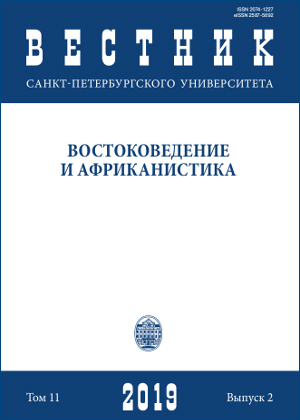Is Voluntative+-(i)di in Cypriot Turkish contact-induced? References to Common Turkic
DOI:
https://doi.org/10.21638/spbu13.2019.202Abstract
The present paper purports to reflect the mood/modality formation in Cypriot Turkish focusing on the morphologic formation <Voluntative +-(i)di> which consists of the markers -(y)AyIm 1. Person singular or -sIn 3. Person singular and of the copula -(i)di. In previous research on Cypriot Turkish syntactical properties this compound is considered to be a Cypriot Greek influenced phenomenon and therefore, specified as having a non-turkic origin. This generally accepted position in the research on Cypriot Turkish needs a scrutiny. I argue therefore, against its non-turkic nature and analyse this morphologic compound referring to the fact that the formation <Vol+-(i)di> is already attested at early development stages of Turkic and is well evidenced in older Turkic sources. My argument is further based on pioneering studies in this field by Starostov, Kononov as well as on other studies, entries in different grammars and dictionaries, and, further, on the fact that similar morphologic formations occur also in (colloquial) Turkish and Turkmen. The methodological principal of the study that makes it possible to read Cypriot Turkish <Vol+-(i)di> constructions is founded on the approach ‘from meaning to form’ employed by Bondarko (1984, St. Petersburg School of Functional Grammar). The present study contributes to on-going investigations, which concern themselves with both grammatical markers and lexical units in the mood/modality concepts in Turkic languages in general and, in particular, continues to research category interactions in Turkic, such as <volitional mood+tense copula(?)/nominal split(?)> that seems to be a paradox if viewed from the angle of their incompatibility.
Keywords:
Cypriot Turkish, Turkic languages, Voluntanive, mood and modality in Turkic languages, copula -idi, Turkmen, Turkish
Downloads
References
Downloads
Published
How to Cite
Issue
Section
License
Articles of "Vestnik of Saint Petersburg University. Asian and African Studies" are open access distributed under the terms of the License Agreement with Saint Petersburg State University, which permits to the authors unrestricted distribution and self-archiving free of charge.





